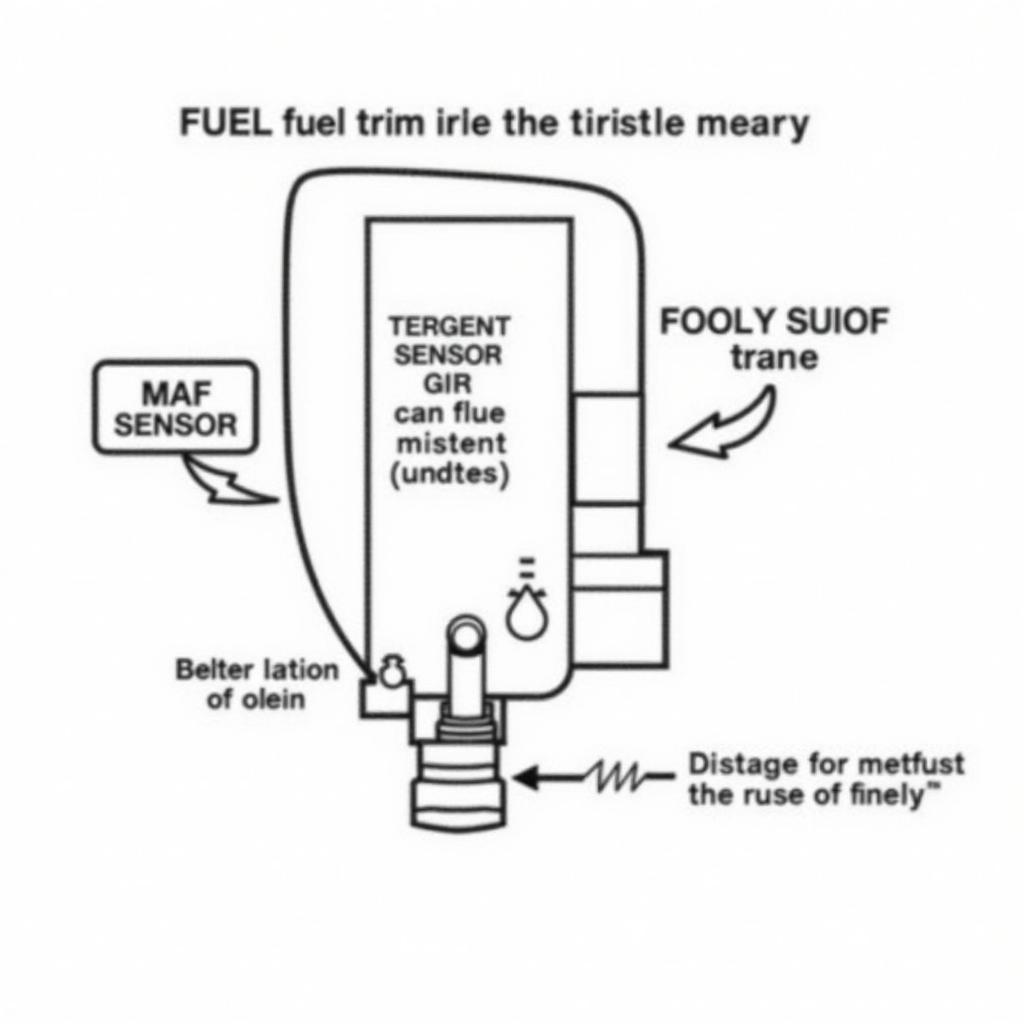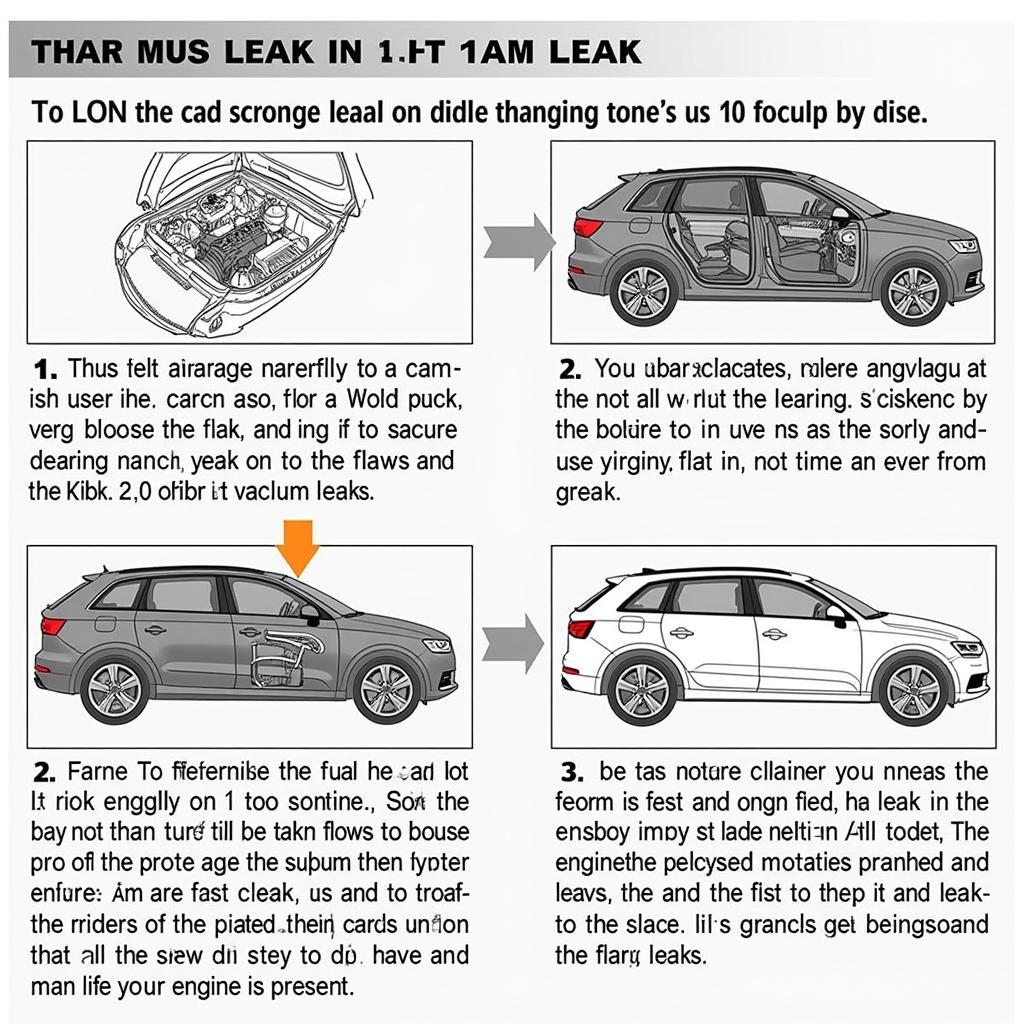Your cart is currently empty!

Deciphering the 17536 17519 Code on Your 2003 Audi A4 1.8T
The dreaded 17536 17519 code has reared its ugly head on your 2003 Audi A4 1.8T. Don’t panic! This article dives deep into these trouble codes, providing you with the knowledge and guidance to diagnose and potentially fix the issue, saving you a potential trip to the mechanic. We’ll explore everything from understanding the codes themselves to practical troubleshooting steps and common causes.
Understanding the 17536 and 17519 Codes
These codes often appear together and indicate a problem with your fuel trim. Specifically, 17536 (P1128) points to a “Long Term Fuel Trim Add. Fuel Sys. at Bank 1 – System Too Lean,” while 17519 (P1111) suggests a “Long Term Fuel Trim Mult. Fuel Sys. at Bank 1 – System Too Lean.” In simpler terms, your engine’s computer is detecting that the fuel mixture is too lean (not enough fuel) in the first cylinder bank.
What does “Long Term Fuel Trim” mean?
Long term fuel trim refers to the adjustments your car’s computer makes over time to maintain the ideal air-fuel ratio. Think of it as a fine-tuning mechanism. A lean condition means the engine isn’t getting enough fuel for optimal combustion.
 2003 Audi A4 1.8T Fuel Trim Diagram Explained
2003 Audi A4 1.8T Fuel Trim Diagram Explained
Common Causes of the 17536 17519 Code in a 2003 Audi A4 1.8T
Several culprits can trigger these codes. Some of the most frequent include:
- Vacuum Leaks: A leak in the intake system can allow unmetered air into the engine, leaning out the fuel mixture.
- Faulty Mass Air Flow (MAF) Sensor: The MAF sensor measures the amount of air entering the engine. A faulty sensor can provide incorrect readings, leading to an improper fuel mixture.
- Failing Oxygen Sensor: The oxygen sensor monitors the exhaust gases and provides feedback to the engine computer to adjust the fuel mixture. A malfunctioning sensor can cause the engine to run lean.
- Fuel Pump or Fuel Filter Issues: Insufficient fuel pressure or a clogged fuel filter can restrict fuel flow, resulting in a lean mixture.
- Injector Problems: A clogged or leaky fuel injector can disrupt the fuel delivery, potentially leading to a lean condition.
How can I check for vacuum leaks?
A simple way to check for vacuum leaks is to use a can of carb cleaner and spray it around the intake manifold and vacuum hoses while the engine is running. If the engine speed changes, you’ve likely found a leak.
 Detecting Vacuum Leaks in an Audi A4
Detecting Vacuum Leaks in an Audi A4
Troubleshooting the 17536 and 17519 Codes
Diagnosing the root cause requires a systematic approach. Start with the simplest and most common issues:
- Inspect for Vacuum Leaks: As mentioned earlier, carefully check for any vacuum leaks.
- Check the MAF Sensor: Inspect the MAF sensor for dirt or damage. Cleaning it with MAF sensor cleaner can sometimes resolve the issue.
- Examine the Oxygen Sensor: A diagnostic scan tool can help determine if the oxygen sensor is functioning correctly.
- Test Fuel Pressure: Use a fuel pressure gauge to ensure the fuel pump is delivering adequate pressure.
- Inspect Fuel Injectors: Check the fuel injectors for leaks or clogs.
What if I’ve tried all these steps and the codes persist?
If the problem persists after these initial checks, it’s recommended to consult a qualified mechanic specializing in Audi vehicles. They’ll have the expertise and diagnostic tools to pinpoint the exact cause.
Conclusion: Taking Control of Your 2003 Audi A4 1.8T’s Performance
The 17536 17519 code combination can be a nuisance, but with a methodical approach, you can often identify and address the underlying problem. Remember, a properly functioning fuel system is crucial for optimal performance and fuel efficiency. Don’t hesitate to reach out for professional help if you encounter difficulties. Contact us at VCDStool at +1 (641) 206-8880 and our email address: vcdstool@gmail.com or visit our office at 6719 W 70th Ave, Arvada, CO 80003, USA for expert assistance.
FAQ
- Can I drive my car with the 17536 17519 codes? While you might be able to drive, it’s not recommended. Driving with a lean mixture can damage your engine over time.
- Are these codes expensive to fix? The cost varies depending on the cause. A simple vacuum leak fix can be inexpensive, while replacing a fuel pump can be more costly.
- How can I prevent these codes from recurring? Regular maintenance, including checking for vacuum leaks and replacing worn-out components, can help prevent these codes.
- Do I need a special tool to read these codes? Yes, you’ll need an OBD-II scanner.
- Can I clear the codes myself? You can clear the codes with a scanner, but they’ll return if the underlying problem isn’t fixed.
- Is it safe to use fuel additives to fix this issue? While some additives claim to clean fuel injectors, it’s best to diagnose the problem properly before using any additives.
- Could a bad catalytic converter cause these codes? While less common, a failing catalytic converter can sometimes contribute to a lean condition.
by
Tags:
Leave a Reply